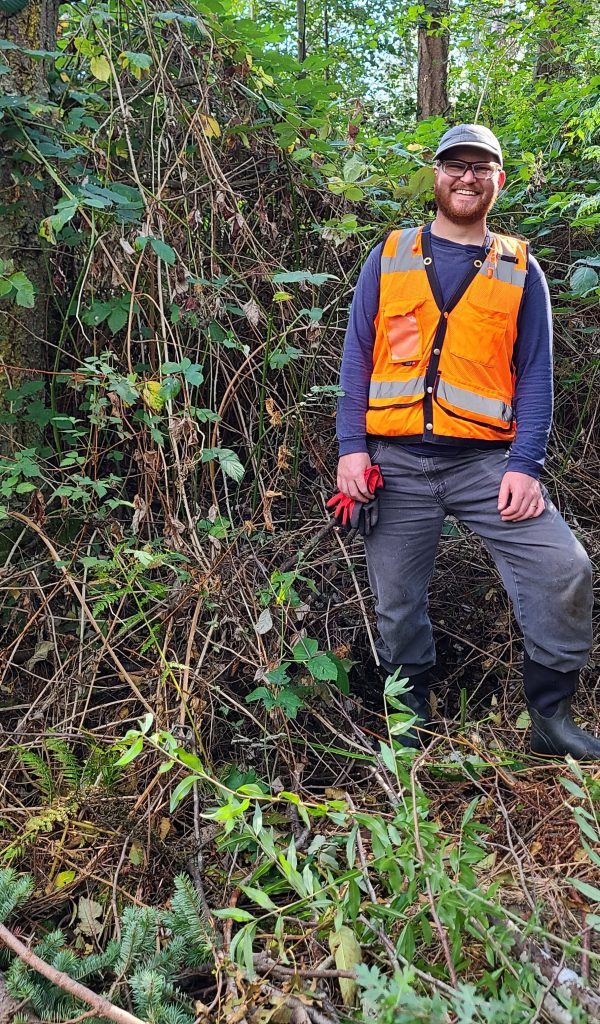OPAL has made significant headway in restoring the Reddick Forest near the Bonnie Brae community by removing invasive species and planting native vegetation. With the expertise of ecologist, Samantha Martin (Field & Fern) and former Land Bank land steward, Eric Nelson (NW Habitat Management).

To ensure the invasive blackberries do not return, a precise “cut and dab” technique was employed, where stems are cut and immediately treated with a targeted herbicide. Similarly, large holly trees underwent stem injections for effective control. These measures are carefully executed to be seasonally appropriate and environmentally safe.
The eco-team also adopted natural restoration methods, like leaving plant material to decompose, which enriches future growth. In some areas, blackberry canes were repurposed as mulch to protect newly seeded native grasses and herbs.
OPAL’s long-term vision for the Reddick Forest is to foster an ecosystem where native flora and fauna can thrive, supporting wildlife and contributing to a balanced deer population. The project also aims to enhance the variety of native berries for birds, particularly during migration periods. The forest’s youthful alder-dominated landscape offers a unique habitat conducive to this growth.
Overall, OPAL’s work exemplifies the power of community efforts and environmental stewardship in enacting positive ecological change.